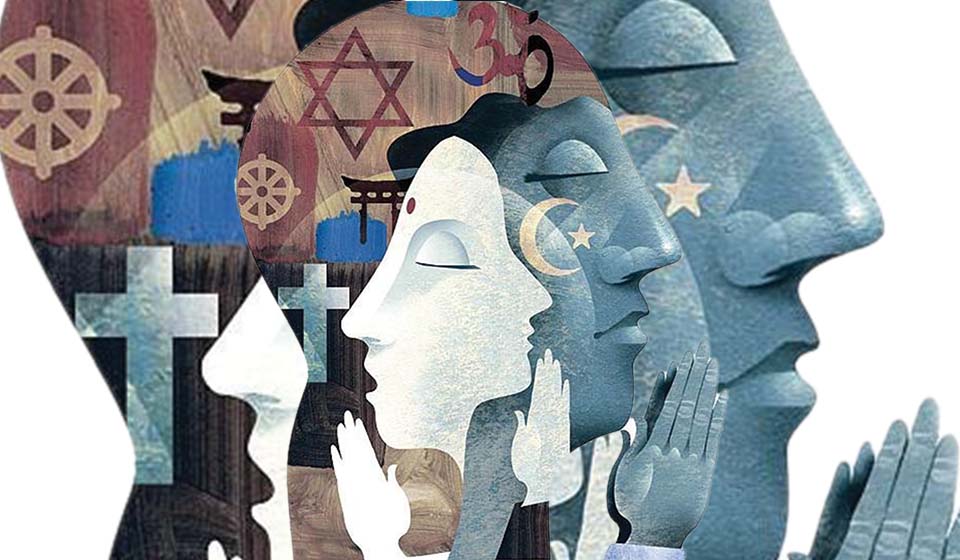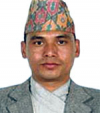
OR
#OPINION
Assessing Nepal’s Future Conflict Trends
Published On: August 30, 2023 08:30 AM NPT By: Rajendra Bahadur Singh

Nepal's cultural and ethnic diversity has been a hallmark of its society for centuries. Home to over 125 ethnic groups and languages, the country's identity is a mosaic of traditions, beliefs, and histories. This very diversity, while offering strength and resilience, also may form the bedrock of identity-related conflicts.
The peace process that followed the end of the decade-long civil war brought hope for stability and unity. The history of Nepal's transformation from a monarchy to a federal democratic republic in some ways marked a pivotal point in addressing historical injustices and inequalities. However, the complexities of managing diversity and addressing deeply rooted social, cultural, religious and economic disparities remain significant challenges. As we stand at this juncture, it becomes crucial to grasp the future trends of conflicts in Nepal, foresee the challenges that lie ahead, and collectively work towards a harmonious and peaceful society. Whatever, as we move forward, emerging trends in identity conflicts need to be acknowledged and managed effectively.
In recent times, Nepal has witnessed a shift in the dynamics of conflicts. Traditional sources of conflict, including political differences and regional disparities, have been joined by new elements such as identity politics, subnational identity assertion and resource allocation. The increasing access to technology and information has enabled the rapid dissemination of ideas and grievances, further influencing the conflict landscape. The evolving landscape of identity conflicts presents both challenges and opportunities for this Himalayan nation. As Nepal seeks to shape its future, understanding and addressing the trends in identity conflicts is paramount for fostering unity amidst diversity.
Identity Politics and Inclusivity
One of the significant shifts is the rise of identity politics. While Nepal has made strides in recognizing the rights of marginalized communities, the journey towards genuine inclusivity is ongoing. The demand for proportional representation and recognition of identities beyond ethnicity, such as gender and sexual orientation, and religious conversion is reshaping the political discourse. A future trend suggests that conflicts might stem from the struggle for equal participation and representation, and right to freedom of religion in all spheres of society.
Sub-national Identity Assertions
Nepal's transition to a federal system was aimed at devolution of power and ensuring representation at the local level. However, the process has given rise to subnational identity assertion. While ethnic communities seek autonomy and recognition within their provinces, there is a potential for conflicts arising from overlapping identities and competing territorial claims. A future trend suggests that unless managed sensitively, these identity aspirations could escalate into conflicts.
Digital Age and Identity Expression
The advent of the digital age has opened new avenues for expressing identity, but it has also brought forth challenges. Social media platforms, while offering a space for diverse voices, can also amplify divisive narratives. The spread of misinformation and the manipulation of online spaces to foster identity-based hatred pose a significant concern. Future identity conflicts might well originate from these virtual realms, making digital literacy and responsible online citizenship critical components of conflict prevention.
Socioeconomic Change and Communal Psychology
The interplay between socioeconomic change and communal psychology become evident when examining how grievances rooted in economic disparities are often framed along communities. Political leaders and interest groups may exploit communal sentiments to mobilize support for their causes, resulting in protests, demonstrations, and even violence. The dynamic can lead to vicious cycle of conflict, where socioeconomic, and cultural inequalities are used to justify communal tension, and vice versa. The Madhesi movement is a notable example of how socioeconomic disparities intersect with communal psychology. Marginalized Madhesi communities, historical feeling excluded from political and economic processes, rallied around their shared identity to demand greater representation and resources. Likewise, the ethnic communities in Koshi Province have recently raised their voices linking their ancestral historicity, and cultural practices.
Inclusive Education and Awareness
Fostering unity amidst diversity begins with education. Curriculum reforms that highlight Nepal's multicultural heritage and emphasize the importance of respect for all identities can play a pivotal role. Moreover, awareness campaigns that promote understanding and empathy can bridge gaps and dismantle stereotypes.
Responsive Policy Framework
A responsive policy framework that acknowledges the multifaceted nature of identity is essential. Policies should be formulated with the involvement of diverse communities, ensuring that their unique concerns are considered. This includes recognizing subnational identities while nurturing a broader national identity. A robust and accountable institutional framework is essential for conflict prevention and resolution. This includes an independent judiciary, impartial law enforcement, and mechanisms for addressing grievances. Strengthening these institutions will enhance trust in the system and offer peaceful avenues for dispute resolution.
Strengthening Inclusive Community Dialogue
Open and respectful dialogue among different identity groups is a cornerstone of conflict prevention. Community-level discussions that provide a platform for expressing concerns and finding common ground can contribute significantly to defusing tensions before they escalate. Engaging local communities in conflict prevention and resolution efforts can yield positive outcomes. By involving community leaders, elders, and influencers, Nepal can tap into their wisdom and influence to address conflicts at the grassroots level.
Promoting Media Literacy and Digital Responsibility
Given the digital age's influence on identity conflicts, media literacy is a tool of empowerment. Initiatives that equip citizens with critical thinking skills to decipher information and identify potential manipulation can foster a more informed and responsible digital community. In a world driven by technology, media literacy is crucial. Empowering citizens to critically evaluate online information and recognize divisive narratives is a step towards countering the negative impact of digital platforms on religious and cultural conflicts.
Dialogue and Interfaith Initiatives
Promoting dialogue between different religious and cultural groups can foster mutual understanding and respect. Interfaith initiatives that highlight common values and shared heritage can go a long way in defusing tensions and building bridges of understanding.
Nepal, nestled in the embrace of the mighty Himalayas, has long been celebrated for its cultural diversity and religious pluralism. The tapestry of traditions and beliefs has woven a unique fabric of society. However, as the world evolves and modernizes, the landscape of conflicts surrounding religious and cultural issues is also shifting. Understanding these trends and working towards harmony becomes crucial for the nation's continued growth and stability.
Nepal's religious and cultural diversity is a source of strength, but also a responsibility. As the country marches forward, it must actively address the emerging trends in conflicts surrounding these issues. By nurturing understanding, promoting dialogue, and embracing education, Nepal can uphold its reputation as a beacon of pluralism and cultural richness. The goal is not only to grasp these future trends but to shape them in a way that ensures a united, inclusive, and harmonious nation for generations to come.
You May Like This

Challenges Confronting the New Coalition
There are no ‘ifs’ and ‘buts’; the NC-UML coalition must succeed to perform and perform to succeed. ... Read More...

Ensuring Food Safety Amidst Challenges
Kathmandu is renowned for its heritage and historical significance, attracting many tourists. The capital city offers an enormous variety of... Read More...

Modi's Moscow Mission: “Enduring and Expanding Partnership”
Indian Prime Minister Narendra Modi chose Russia for his first bilateral visit (July 8-9) in his third term. This is... Read More...









Just In
- Heavy rainfall likely in Bagmati and Sudurpaschim provinces
- Bangladesh protest leaders taken from hospital by police
- Challenges Confronting the New Coalition
- NRB introduces cautiously flexible measures to address ongoing slowdown in various economic sectors
- Forced Covid-19 cremations: is it too late for redemption?
- NRB to provide collateral-free loans to foreign employment seekers
- NEB to publish Grade 12 results next week
- Body handover begins; Relatives remain dissatisfied with insurance, compensation amount









Leave A Comment